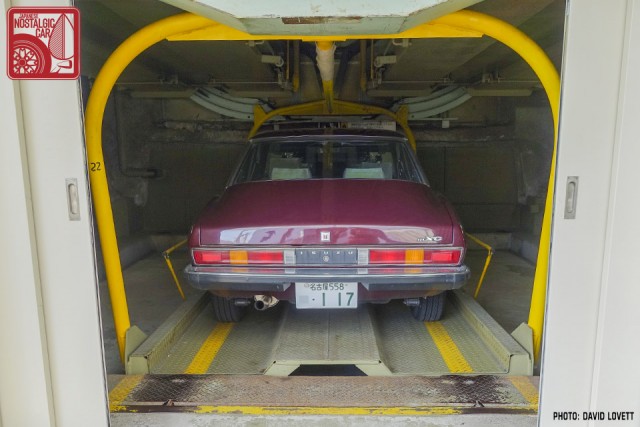
Day 05 in Nagasaki marked an unusual one, as it was the only day of our entire journey in which no driving was planned at all. Nagasaki is one of Japan’s major port cities and a historic one, and worth a tour if you find yourself there. Because all major Japanese cities have a ultra-efficient public transportation systems, we buttoned up the Isuzu 117 in a carousel parking garage and proceeded on foot.
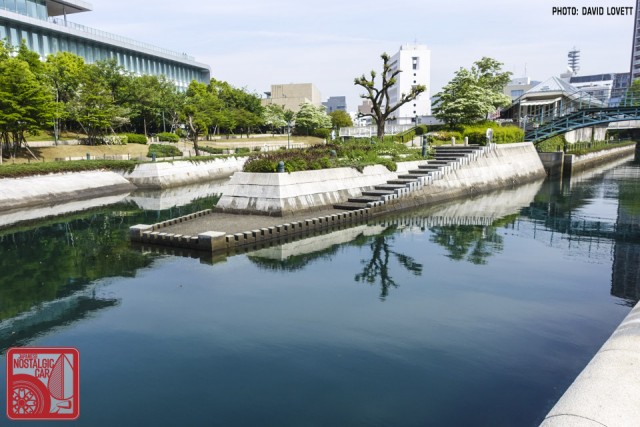
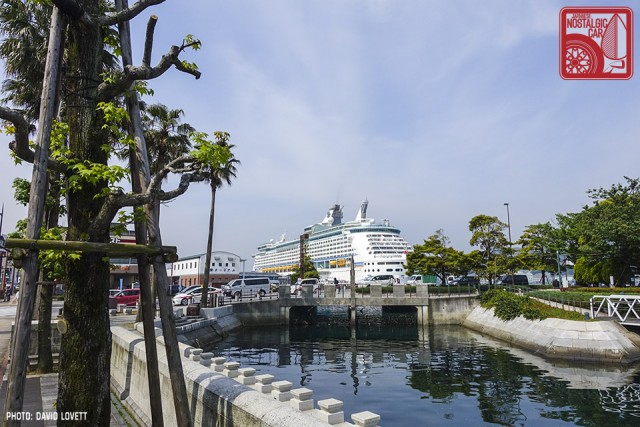
First up on the itinerary was the Nagasaki Bay, where we would catch a vessel headed for a nearby island.

No, not the massive cruise liner, one of the small tour boats in front of it. As we pulled out to sea, the tour guide pointed out various points of interest along the way, including a massive shipyard owned by Mitsubishi Heavy Industries.

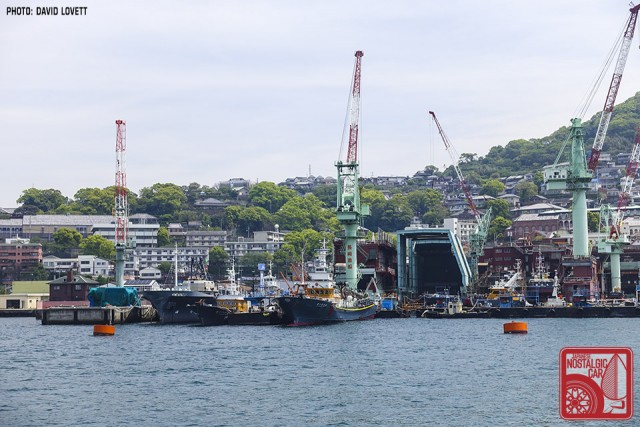
As it turns out, Mitsubishi owns a huge portion of the ports in Nagasaki, and has a very large presence throughout the city.

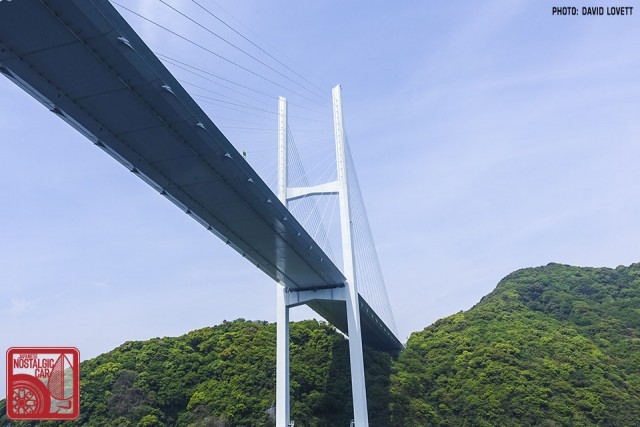
Heading out of the bay, we crossed under the Megami Ohashi bridge, the longest cable-stayed bridge on the southern island of Kyushu. Its nickname is Venus’s Wing, and it connects the northern and southern halves of Nagasaki Bay. Of course, Mitsubishi had a hand in it too, supplying the special anti-corrosion paint from one of its many subsidiaries.
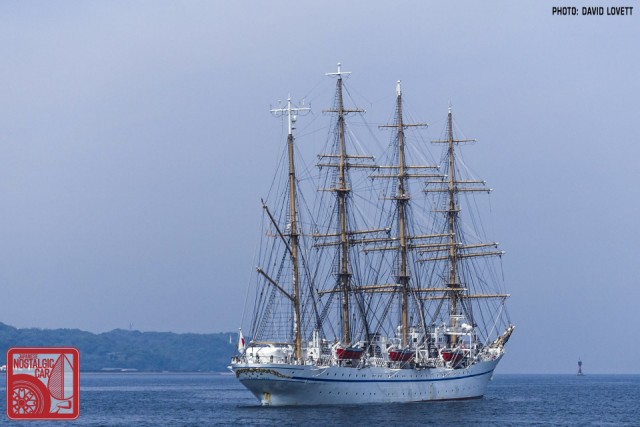
As we ventured further out, we came across a ship which looked like it had been plucked right out of the set of Pirates of the Caribbean. It apparently was there for the Nagasaki Tall Ships Festival the following weekend, an event that attracts sailing ships from all over the world.
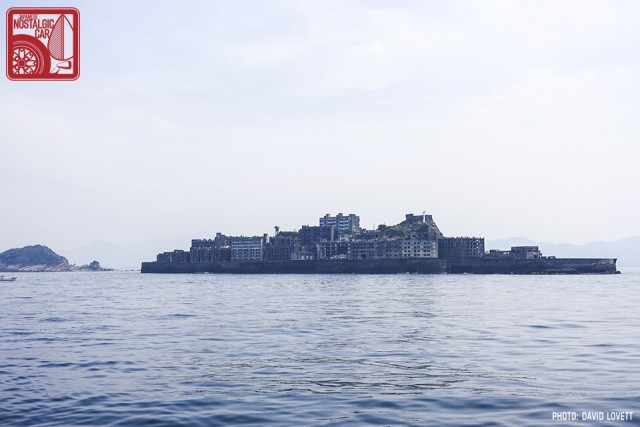
Our destination was none other than Hashima Island, better known as Gunkanjima, or Battleship Island. It was named as such because people thought it looked like the 1920 Japanese battleship Tosa. That ship, of course, was also built by Mitsubishi in Nagasaki and was named after the clan from which Mitsubishi’s founder Yataro Iwasaki hailed.

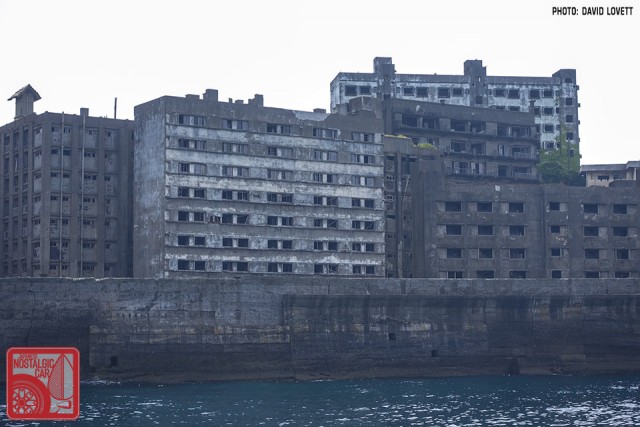
As the story goes, Mitsubishi discovered coal on Hashima island as early as 1810. In the late 1800s, Mitsubishi came to own the island outright and started heavy mining operations. This meant moving workers, administration staff, and their families to the minuscule, 16-acre rock nine miles off the coast of Nagasaki.
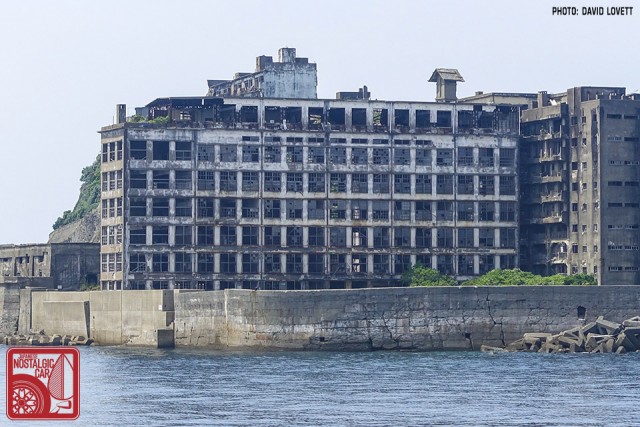
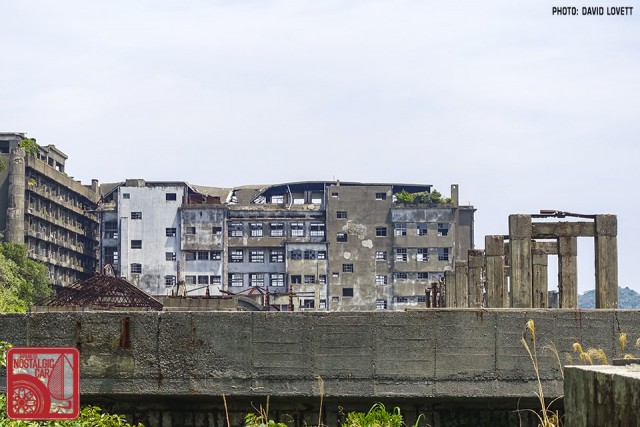
As the mining operation grew, so did the number of personnel on the island. The population peaked in 1959 with nearly 5,300 people. In fact, the population density was equivalent to a staggering 83,600 people per square kilometer. The city with the highest population density today is Macau, China, which only manages a paltry 21,200 people per square kilometer. Being from Texas, my family owns a ranch that measures 175 acres and has a population of two. To have 5,300 people living on just 16 acres is mind-boggling.
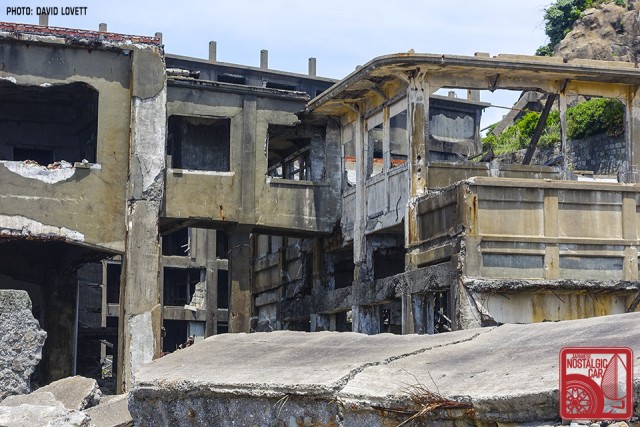

Everything a small city would need was available on the island, from schools to barber shops, a hospital, and a shrine. Electricity was originally supplied using generators, but in 1918 as the population grew, undersea cables were laid. Drinking water also was originally provided by distilling sea water, but again, this proved insufficient and water supply ships were organized to supply the island. To reduce water use, toilets and bath houses were communal.
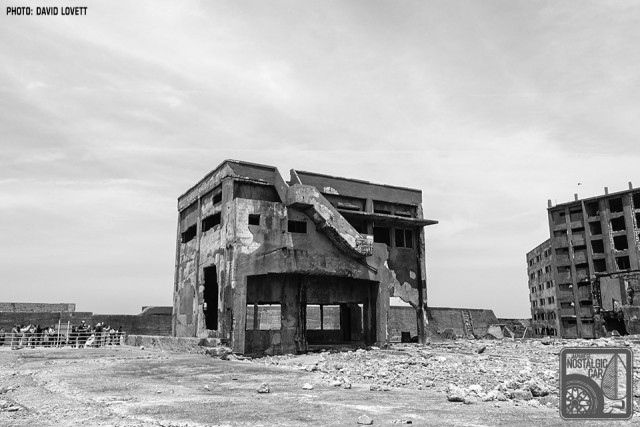
The average worker got paid around ¥150,000 a month ($1,350 at today’s exchange rate), which was a huge amount for the average Japanese in the 1950s. A brand new Subaru 360 at the time cost ¥365,000. Furthermore, electricity, rent, water, all utilities were subsidized, meaning the entire paycheck was play money. As a result, 99 percent of the island’s inhabitants had a television, compared to only 30 percent of rest of the country at the time.

Life was hard because coal mining is hard work. At its peak, the mine shaft went a little over a kilometer deep. By the late 1960s, coal was losing favorability to petroleum. Coal mines began shutting down all over the country and Gunkanjima was no exception. Mitsubishi eventually closed down the mine and began moving people off the island, and by 1974 it was completely deserted.
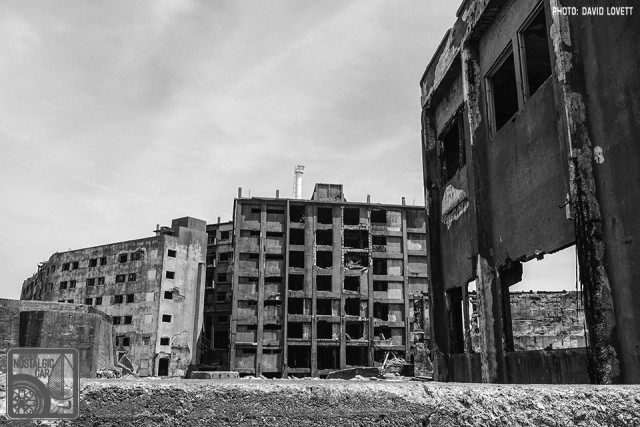
Most inhabitants couldn’t take their large personal belongings with them, so televisions and furniture and other items were left behind. Mitsubishi retained ownership of the island until 2002, at which point they decided that the land taxes were too high and returned the island back to the city of Nagasaki.

In 2005 Nagasaki permitted a few journalists to photograph the site, and in 2009 tours were opened on the island. Of course, mother nature has taken its toll, rendering most of it extremely dangerous. Going into the heart of the island is strictly forbidden. I asked our tour guide if she’d ever ventured further in, and she said only once, to carry film equipment for a group filming a promotional video. The tour we chose is one of the few that actually allows visitors onto the island.
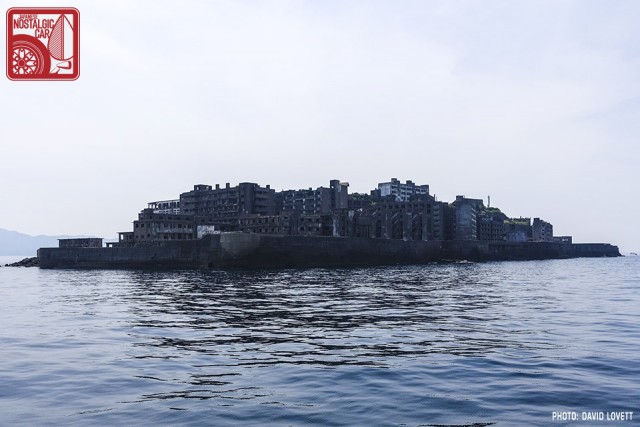
On July 15, 2015 the island was approved as a UNESCO World Heritage site, which means interest in the island is going to skyrocket. If you have a chance, I highly recommend a visit.

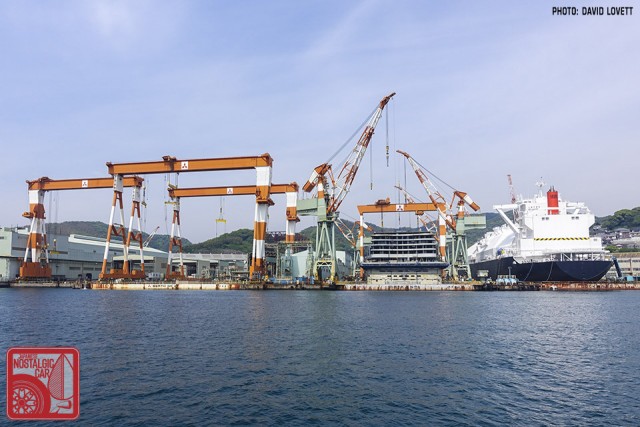
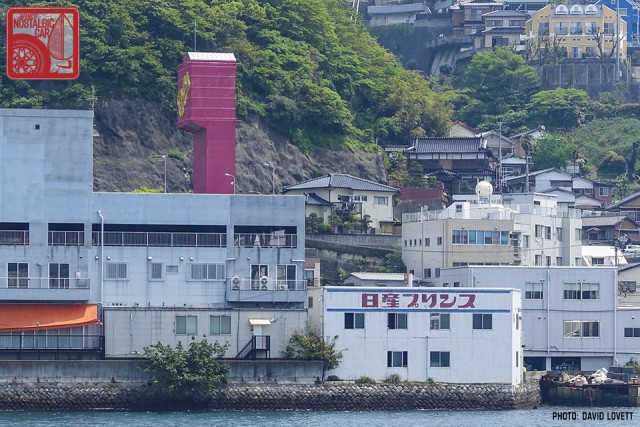
On our way back from the island, we passed a small Nissan Prince dealer standing on the edge of the water. After visiting the island and witnessing Mitsubishi’s reach, it seemed to represent David in the Goliath story of Nissan versus Mitsubishi, but in the automotive world that’s clearly not the case at all.
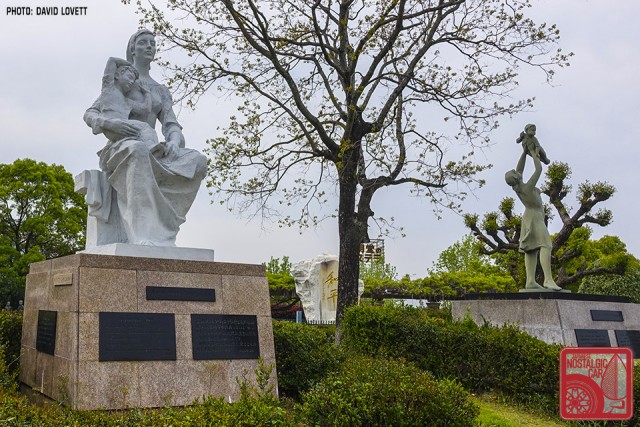
With only one day in Nagasaki, there was one more location I absolutely had to visit, especially being an American. On August 6 and 9, 1945 the US dropped two atomic bombs on Japan. In Hiroshima, an estimated 150,000 were killed. In Nagasaki the death toll varies from 39,000 to 75,000 depending on who you ask. About half those numbers were killed instantly; the rest perished in the days after from burns, radiation sickness and other injuries. An additional 75,000 survivors in Nagasaki sustained injuries.

While the bomb that was dropped on Nagasaki, nicknamed “Fat Man,” was larger than the “Little Boy” that hit Hiroshima, casualties were far greater in Hiroshima because of its mostly flat terrain. Nagasaki, on the other hand, has many mountains and valleys that protected some areas from the atomic blast.
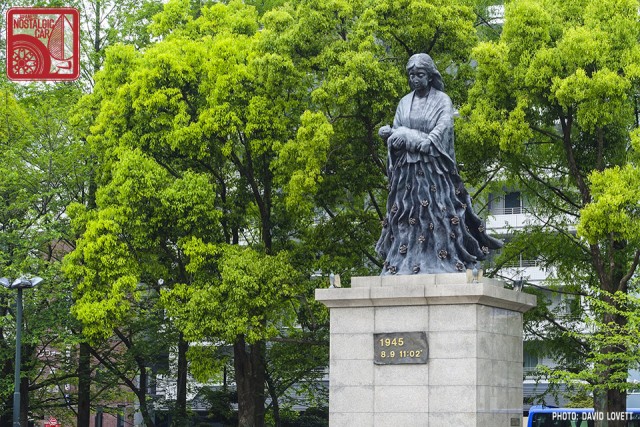
We started in the Peace Park, moving our way through haunting statues built to remember the bombing. At the park, foundations of a prison that was absolutely flattened still remains as reminder of the destructive force of the bomb.
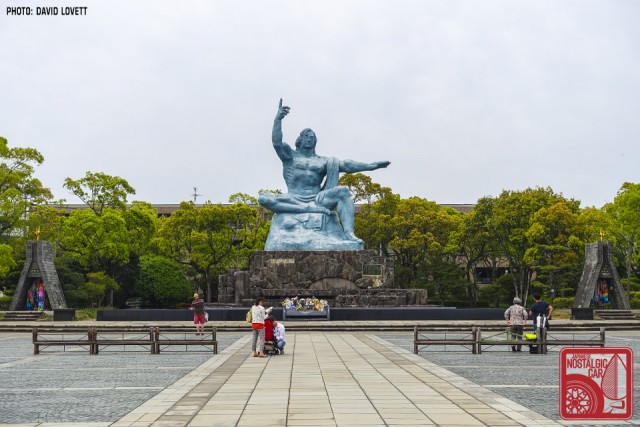
At the end of the park sits the Heiwa Kinenzou, or Peace Statue, created by Nagasaki Prefecture native Seibo Kitamura. The statue’s right hand points skyward to warn humanity of the threat of atomic weapons, while his left hand is extended in a gesture of peace. His eyes are closed in prayer for the souls of the bomb’s victims.

About a block away from the park was a point that I felt I needed to stand: the hypocenter of the atomic explosion. The original target was a city named Kokura in the center of what is now Kitakyushu, the city where we visited an Isuzu service center on Day 04. However, cloudy skies on the morning of August 9 hid Kokura, and Nagasaki was chosen instead. Just like that, the fates of thousands were forever changed.
A group of high school students on a field trip sat among the hypocenter’s concentric rings, which symbolize the wave of blast. Standing there next to the class was both incredibly saddening and powerful.
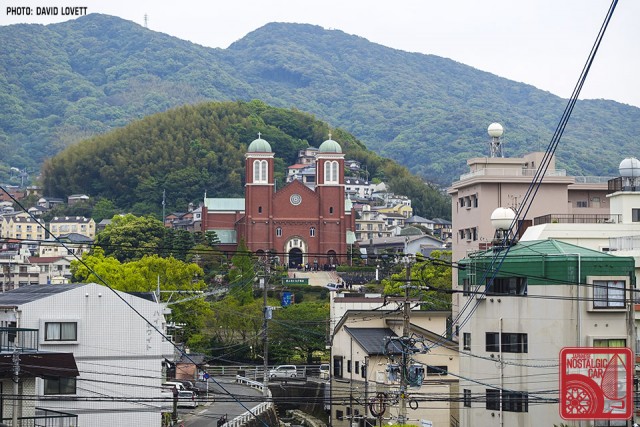
After the hypocenter, we made our way to the Urakami Tenshudo Catholic Church. It When it was completed in 1925, it was the largest Catholic cathedral in all of East Asia. Of course, it too was demolished in the blast, but the locals rebuilt it from the ground up in 1959.

The final site on our atomic tour was deep in the heart of the city, where a torii gate to the Sanno Shinto Shrine was split in half — one side survived the atomic blast, the other crumbled to the ground. Amazingly, half the gate still stands today and the pieces that crumbled are laid beside it.
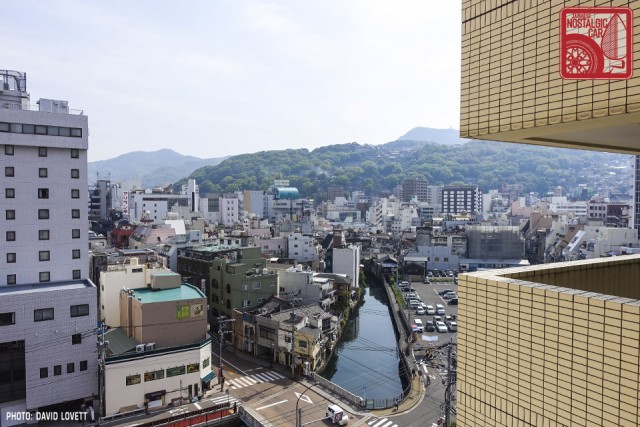
The destructive force of the bomb and the impact it had on the country is nothing short of tragic, but looking around at the beautiful city that rose from its ashes is simply staggering. In the wake of one of the most destructive wars in history, Nagasaki came back stronger than ever, a gleaming testament to the unbreakable will of the Japanese.
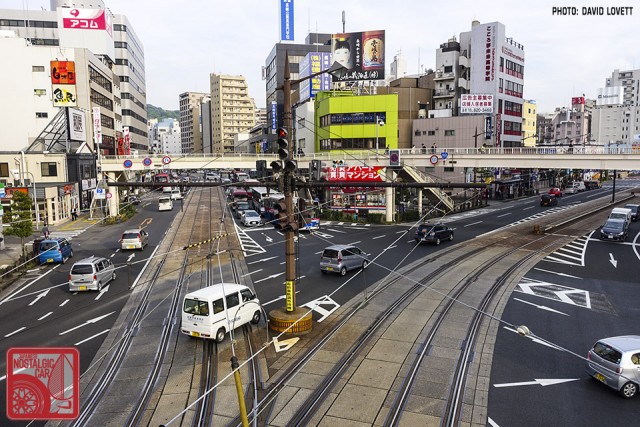
We worked our way back towards Nagasaki station, stopping briefly to grab a few photos of the madness that are the streets of Nagasaki. Imagine driving through the middle of this, contending with not only cars criss-crossing a mesh of intersecting lanes, but trains and cyclists as well.

Our final destination for the night was a trip up to the top of a Mount Inasa to get a breathtaking night view of the city. The city lights spread out beautifully, as this vista has been voted one of the top three night views in the entire world.
After a day of nothing but walking and public transportation, I was ready to get back in the Isuzu and make our way south. That, however, will have to wait for the next day. To be continued…







Great report! Great to see the Hashima tour pics too, as I’ve wondered what you can actually see. Looks interesting!
By the way, those ‘trains’ that run around the streets of Nagasaki are called ‘trams’. Tokyo, Melbourne, Hong Kong, San Francisco, and few of those funny places in Europe have them as well.
While confusing to some, the easiest thing to remember is they cannot change lanes without indicating…
And that strange place called Toronto also does!
Some people may call them trams, I call them terrifying, haha! It was really weird looking over my right shoulder and behind me when turning right just to make sure I wouldn’t pull out in front of one.
I’ll take Nagoya traffic any day!
Great to see your pics from Hashima, having visited there a couple of years ago it was nice to see familiar sights again it is such a fascinating place with a very colored history and once the most densely populated 6/10’s of a mile on the planet…. it is a shame it has become so weather worn and it will only be so many years before it no longer is even recognizable. Nagasaki is an amazing place we were there for the Chinese Lantern Festival too which is a great event and experiencing the great street food was certainly a high point of our trip.
Hashima maybe only has another 20 years or so left in it before it really starts to crumble away. Being placed so far out in the ocean with nothing to protect it from the ocean/typhoons, it really does take a beating.
Nagasaki was a beautiful place and I’d love to go back there someday. After living in Nagoya for so long, it was really interesting to see a place that actually had elevation changes!
It was cool to see you put your instrument in a case and create just as much interest with a noteless jazz break. I’m not quite sure what that means either, but another great installment!
I am not very familiar with Mitsubishi, but was surprised to see the three-diamond company only got one diamond on Consumer Reports’ recent report card. They were right near the bottom of the 30 brands listed, even below Dodge and Chrysler – ouch.
With the recent feature of Godzilla at the New York Auto Show, I mentioned I was trying to catch up on my kaiju flicks. I am thinking Hashima has been connected to more than one Godzilla film and probably many more in the monster genre. Look forward to seeing where you get back on the Rodan go next.
This was one of the main reasons we took the trip! We knew we had to visit Gunkanjima before it either got too crowded, too expensive or just disappeared, so what better time to do it then when we’re already driving down that direction!
I think Gunkanjima’s most famous movie usage was in Spectre. I actually talked to the guide about it and the main actors never actually set foot on Gunkanjima. They filmed a bunch of establishing shots, and then all the scenes with the actors were filmed elsewhere.
Mitsubishi is such a massive company, making just about everything under the sun from electronics to owning banks. Even if their automotive division is in dire straits, they’re an unstoppable force that will never really be toppled.
I visited the Hiroshima Peace Park in 2004 and found the entire experience to be heartbreaking. There was a library with huge books, each page with an eyewitness account of the aftermath. They were in Japanese and English. Some of the descriptions were like something straight out of a horror movie. Not for the faint of heart. Your trip brings back many of those emotions.
The massiveness of Mitsubishi is also impressive. The shipyards are a great peek
into how these engineering marvels are made. Humans can accomplish things both awe-inspiring and destructive. Less of the latter would be nice. Thanks for the thoughtful account.
We actually went to the Hiroshima peace park around 2010 or so. Now, after having been to Nagasaki, I have stood in the hypocenter of both bombs and looked out at the city sprawling away from me. I actually found both sites very powerful. It’s an incredibly tragic event, but the will to literally rise from the ashes and build two of the most amazing cities in the world today in such a short timespan is truly awe-inspiring.
The Nagasaki bomb drop had an unananticiped side problem! There were several Allied POW camps in the impacted area. While ultimately local Japanese “Victims” of the resulting radiation after effects were recognized and treated for their resultant medical exposure, the Allied POWs were not afforded the equivalent consideration! Sad but true!